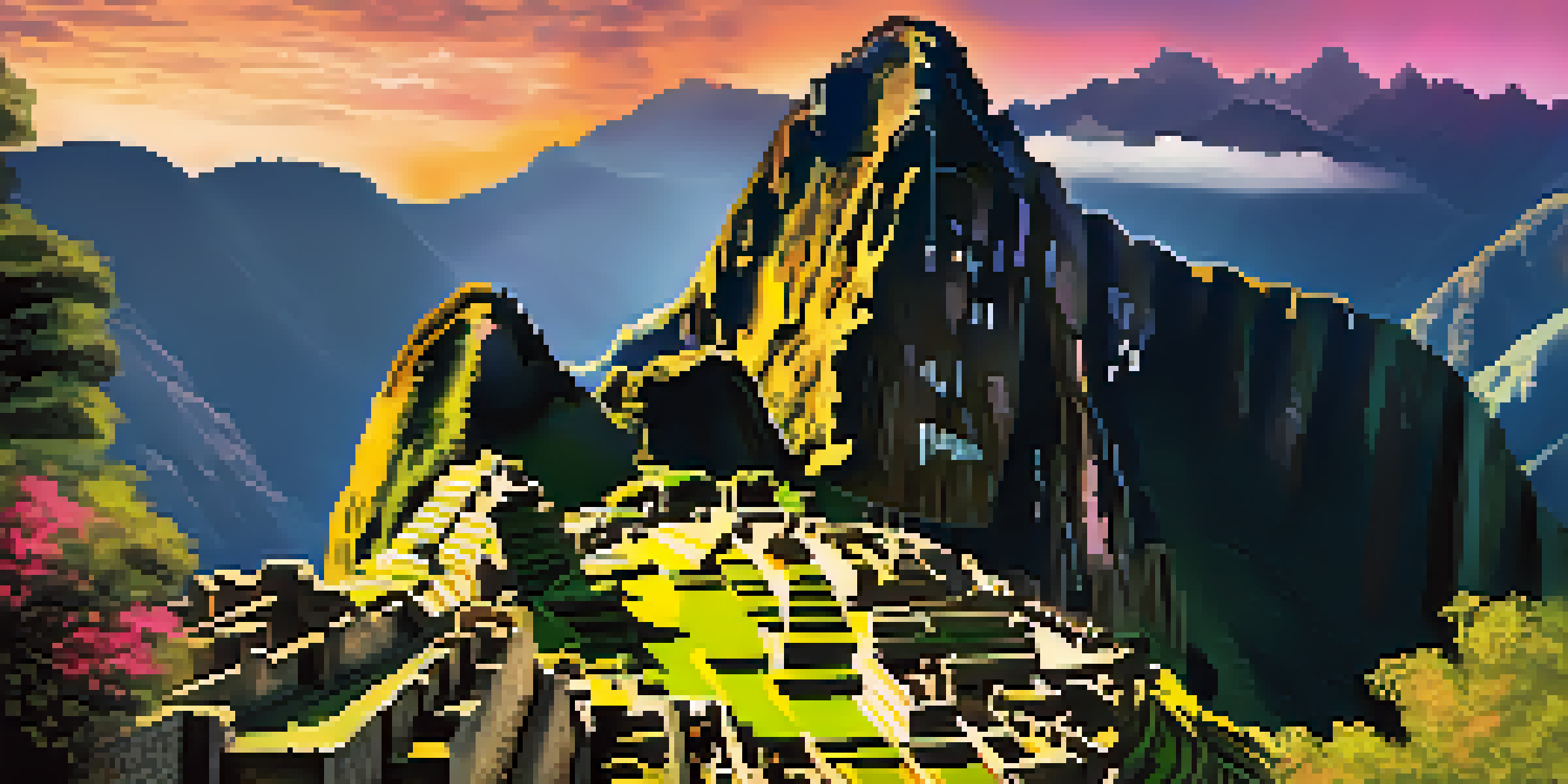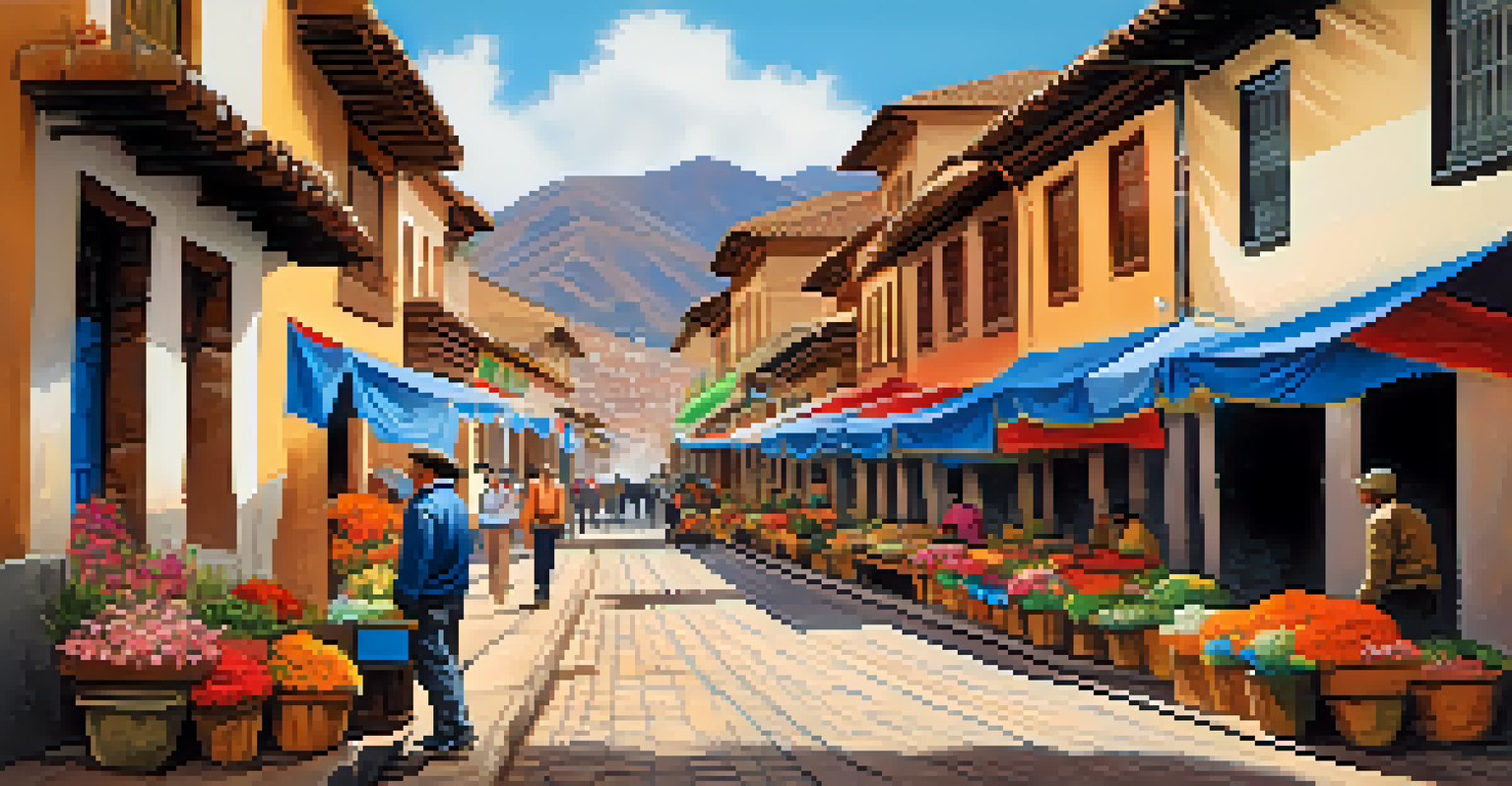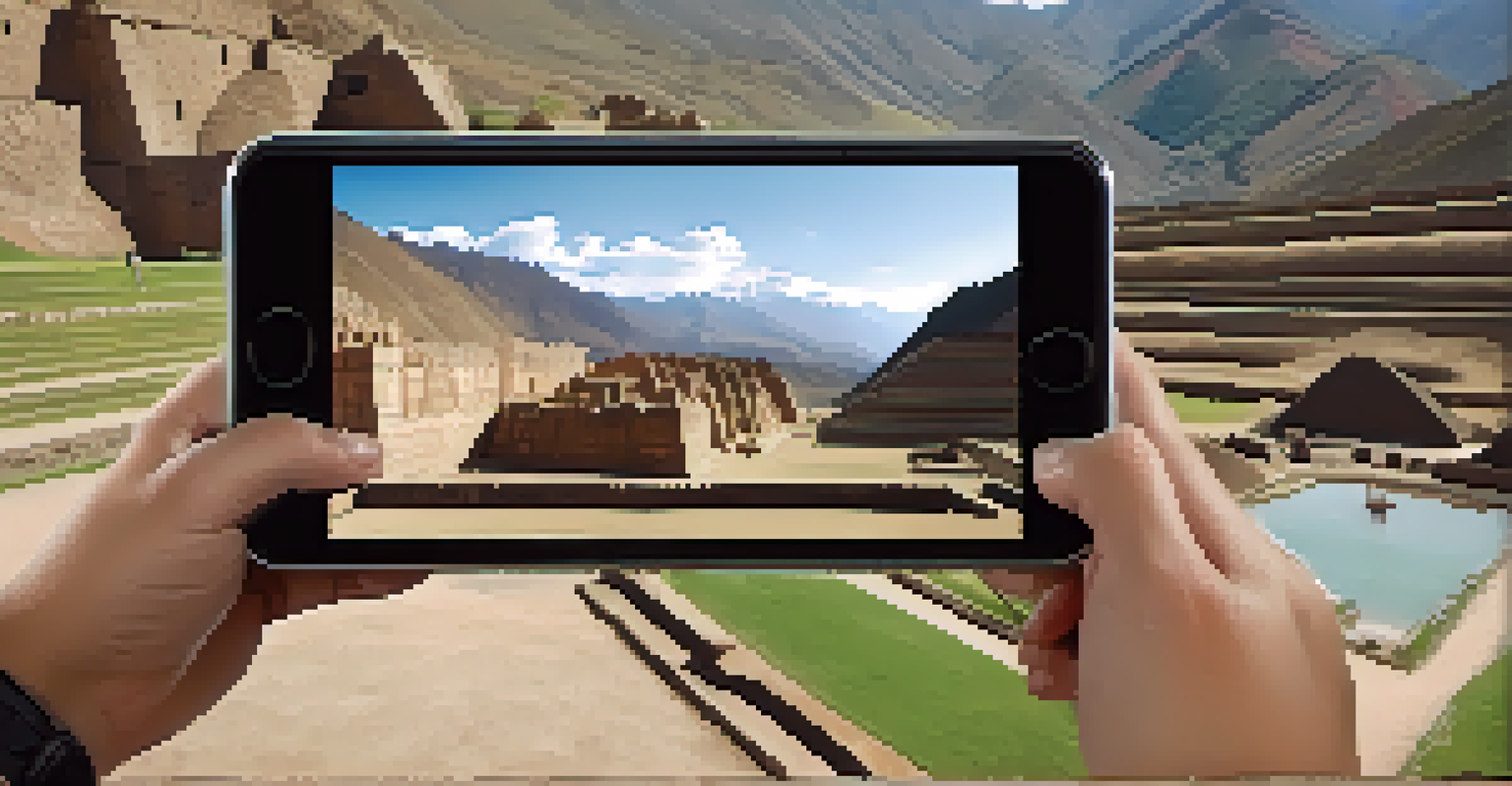The Role of Technology in Peru's Tourism Evolution Ahead

Understanding Peru's Tourism Landscape Today
Peru's tourism scene has undergone a remarkable transformation in recent years, drawing millions of visitors to its rich cultural heritage and stunning landscapes. From the ancient ruins of Machu Picchu to the vibrant streets of Cusco, the country offers a diverse array of attractions. However, as travel trends shift and technology evolves, the way tourists interact with these sites is also changing. Understanding this landscape is crucial for stakeholders looking to harness technology effectively.
Traveling – it leaves you speechless, then turns you into a storyteller.
The influx of travelers has not only boosted Peru's economy but also highlighted the need for sustainable practices. As more people visit, the impact on the environment and local communities becomes a pressing concern. This is where technology can play a pivotal role in promoting responsible tourism, ensuring that visitors enjoy the beauty of Peru without compromising it for future generations. The challenge lies in balancing growth with sustainability.
Moreover, the pandemic has accelerated digital transformation within the tourism sector. Travelers now prioritize safety and convenience, leading to increased demand for contactless experiences and virtual tours. This shift has prompted local businesses to adopt innovative technologies, making it essential to understand the current tourism landscape and the role technology can play in its evolution.
The Rise of Digital Platforms in Travel Planning
Digital platforms have revolutionized how travelers plan their trips, making information more accessible than ever before. Websites and apps allow users to explore Peru's attractions, compare prices, and read reviews with just a few clicks. This ease of access empowers travelers to make informed decisions about their itineraries and accommodations, enhancing their overall experience.

Social media also plays a significant role in travel planning, as influencers and user-generated content guide potential visitors. A stunning Instagram post of a beautiful Peruvian landscape can spark interest and inspire travel plans, creating a ripple effect. This phenomenon has led to a new form of marketing, where authentic experiences shared online can attract a global audience to lesser-known destinations.
Sustainable Tourism is Essential
As visitor numbers rise, Peru must adopt sustainable practices to protect its environment and culture for future generations.
Additionally, these platforms often provide tailored recommendations based on user preferences, further personalizing the travel experience. As technology continues to evolve, we can expect even more innovative solutions that cater to individual needs, making Peru an attractive destination for a diverse range of travelers.
Enhancing Visitor Experiences with Augmented Reality
Augmented reality (AR) is emerging as a game-changer in enhancing visitor experiences at historical sites and natural wonders across Peru. By integrating AR technology, travelers can access interactive content that enriches their understanding of a site's history and significance. For instance, imagine standing at Machu Picchu and pointing your smartphone at a specific structure to see a 3D reconstruction of how it looked centuries ago.
We do not inherit the earth from our ancestors, we borrow it from our children.
This immersive experience not only captivates tourists but also fosters a deeper connection to the culture and history of Peru. AR applications can provide guided tours, offer language translations, and even highlight lesser-known facts about attractions. This technology bridges the gap between traditional tourism and modern expectations, making visits more engaging and informative.
As AR continues to develop, its potential to attract tech-savvy travelers grows. This demographic seeks unique, interactive experiences, and Peru's willingness to embrace such innovations could position the country as a leader in tech-driven tourism. The future of travel in Peru is one where technology and culture coexist harmoniously.
Sustainable Tourism Through Smart Technology
Sustainable tourism is more important than ever, and technology can provide the tools necessary to promote eco-friendly practices. Smart technology, such as IoT devices and data analytics, can help monitor visitor flow at popular destinations, allowing for better management of resources. This ensures that tourists enjoy their experiences while minimizing their impact on the environment.
For example, smart sensors can track foot traffic and help park rangers manage visitor access to preserve natural habitats. These technologies can also facilitate real-time information sharing, alerting visitors about overcrowding or environmental conditions. By leveraging data, Peru can encourage responsible tourism and protect its natural and cultural assets.
Digital Tools Transform Travel Planning
The rise of digital platforms and social media has revolutionized how travelers plan trips, making information more accessible and personalized.
Furthermore, local businesses can adopt eco-friendly technologies, such as renewable energy sources and waste reduction systems. By promoting these practices, Peru can attract environmentally conscious travelers who prioritize sustainability, creating a win-win situation for both tourists and the country’s ecological health.
The Impact of Online Reviews and Reputation Management
In today’s digital age, online reviews significantly influence travelers' decisions, making reputation management crucial for businesses in Peru's tourism sector. A few positive reviews can attract potential visitors, while negative feedback can deter them. This reality underscores the importance of maintaining a strong online presence and managing customer relationships effectively.
Tour operators and accommodations are increasingly focusing on engaging with their guests both before and after their visits. This proactive approach not only improves customer satisfaction but also builds a loyal community of travelers who share their positive experiences. Engaging with audiences on social media platforms and responding to reviews can enhance a business's credibility and visibility.
Moreover, leveraging technology allows businesses to analyze customer feedback, identifying areas for improvement. From streamlining booking processes to enhancing service quality, understanding customer expectations and preferences can lead to a more satisfying experience for both parties.
Leveraging Data Analytics for Targeted Marketing
Data analytics is transforming how tourism businesses in Peru target and engage potential travelers. By analyzing consumer behavior and preferences, companies can create personalized marketing strategies that resonate with their audience. This data-driven approach allows businesses to tailor their offerings, ensuring they meet the unique needs of different traveler segments.
For example, if data shows a rising interest in adventure tourism among millennials, businesses can develop targeted campaigns highlighting hiking, biking, and exploration experiences in Peru's scenic landscapes. This targeted approach not only increases engagement but also enhances the likelihood of conversions, turning interest into bookings.
AR Enhances Visitor Engagement
Augmented reality technology is significantly enriching visitor experiences at historical sites, fostering a deeper connection to Peru's cultural heritage.
Additionally, data analytics can help businesses optimize their pricing strategies, ensuring competitive pricing while maximizing profits. By understanding market trends and consumer demand, businesses can adjust their offerings accordingly, positioning Peru as an attractive destination for various travel budgets.
The Future of Technology in Peru's Tourism Sector
As technology continues to evolve, its influence on Peru's tourism sector will only grow. From AI-driven chatbots that assist travelers with inquiries to advanced booking systems that streamline the travel process, the future is brimming with possibilities. Embracing these advancements will be essential for businesses aiming to stay competitive and relevant in a rapidly changing landscape.
Moreover, the integration of technology in tourism is likely to enhance collaboration among various stakeholders, including government agencies, local communities, and businesses. By working together, they can develop innovative solutions that benefit all parties involved. For instance, using tech to promote local artisans and cultural experiences can enrich the travel experience while supporting the local economy.

Ultimately, the future of technology in Peru's tourism sector hinges on a commitment to sustainability and responsible practices. By leveraging technology to enhance visitor experiences and promote eco-friendly initiatives, Peru can position itself as a leader in the global tourism arena, attracting travelers seeking meaningful, authentic experiences.